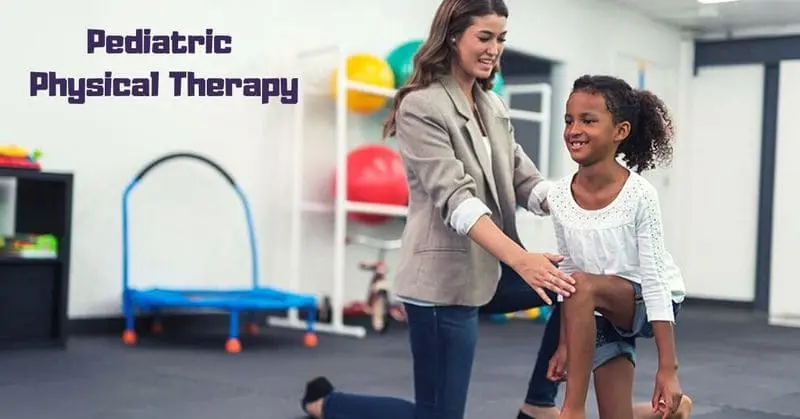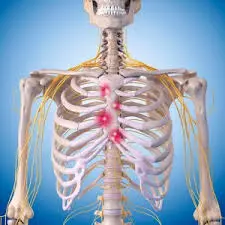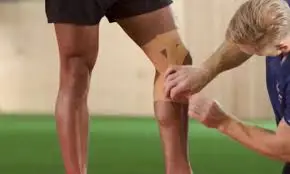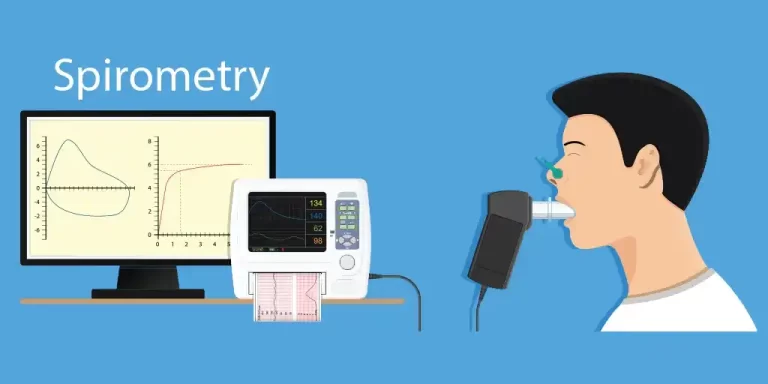Pediatric Physical Therapy
What is Pediatric Physiotherapy?
A specialist area of physical therapy, pediatric physiotherapy (also referred to as pediatric physical therapy) focuses on diagnosing and treating children with a range of physical ailments and developmental difficulties. Enhancing and promoting a child’s movement, functional capacities, and general physical well-being is the primary objective of pediatric physical therapy.
When it comes to treating prenatal diseases, early childhood diagnoses, childhood injuries, and the transfer from infancy to adult care, pediatric physical therapy has shown to be extremely beneficial.
The goal of this specific therapy for young patients is to improve their general quality of life as well as their physical function.
Its long-term advantages are especially noteworthy because they can lower the need for surgery or other invasive procedures, minimize impairment, and eventually reduce the cost of future healthcare services.
Pediatric physiotherapy support treats a wide range of acute and chronic conditions in a variety of venues, including schools, community centers, and acute care clinics.
Children up to the age of eighteen are expertly assessed, diagnosed, and treated for neurological, developmental, cardiorespiratory, and orthopedic issues by pediatric physiotherapists. The center’s priorities are helping young patients become more independent and useful.
Notably, for children with chronic illnesses such as cerebral palsy, juvenile idiopathic arthritis, and cystic fibrosis, physiotherapy is critical in improving pulmonary function, motor control, muscle strength, and physical endurance.
How does Pediatric Physiotherapy Work?
When it comes to helping kids develop physically to their full potential, pediatric physiotherapists are essential.
Hey offers complete treatment to patients ranging in age from one-day-old babies to teenagers, using their specialist understanding of movement, growth, and disorders that might affect infants and developing children.
The therapeutic approach may include posture teaching, focused therapeutic exercises, stretching, soft tissue massage, and mobilization.
Acknowledging that kids aren’t just little versions of adults, these therapists adeptly involve kids in play-based exercises and developmentally appropriate enjoyment, encouraging mobility to the fullest extent possible.
They establish a nurturing atmosphere that helps kids reach their developmental milestones by fusing play and education. Beyond professional settings, pediatric physiotherapists provide their services within the specific environment and family dynamic of each kid.
They have the chance to work together with kids in a variety of contexts, such as homes, preschools, classrooms, and leisure activities.
Pediatric physiotherapists frequently interact with medical professionals, nurses, social workers, educators, caregivers, and occupational and speech therapists due to the multifaceted requirements of children and their families.
In these types of interdisciplinary teams, good communication is essential because the physiotherapist needs to share observations, evaluations, and treatment plans with the child, parents, and other team members.
Role Of A Pediatric Physiotherapist
An important responsibility for a pediatric physical therapist is to assess and treat children with motor skill problems. Their main goal is to increase the child’s strength and range of motion so they can move around their environment more quickly and easily.
To address these issues, a variety of physical therapy techniques are used, such as dry needling, therapeutic massage, muscle stretching, joint mobilization, manipulation, and a variety of focused exercises.
Enhancing or correcting the child’s flexibility, posture, strength, balance, coordination, sensory processing, and general motor abilities is the aim of each physiotherapy session.
Physiotherapists incorporate entertaining, age-appropriate exercises and activities to make the experience fun and interesting, keeping the kid content and motivated throughout the procedure.
A pediatric physical therapist works closely with families, teachers, doctors, caregivers, and other healthcare professionals in addition to the kid directly. The youngster will receive thorough support and care in a variety of settings thanks to this cooperative approach.
Moreover, physiotherapists instruct parents or other caregivers on how to use mobility aids, pushers, and standing frames safely. Through this training, families are better equipped to support and help their children with everyday tasks on a constant basis.
Principles of Paediatric Physiotherapy
Pediatric physiotherapists are highly skilled professionals who treat children of all ages. They have specific training and experience in growth and development, as well as a wide range of pediatric diseases and disorders.
Their knowledge enables doctors to accurately assess, recognize, diagnose, and treat juvenile patients’ physiological abnormalities. The entire approach used in pediatric physiotherapy includes targeted exercises, suitable interventions, and hands-on techniques.
Achieving an appropriate range of motion and improving muscular tone, strength, coordination, balance, posture, and mobility are some examples of functional impairments that need to be addressed.
The International Classification of Functioning, Disability, and Health (ICF) model is a key component of their approach, ensuring that treatment takes participation and activity restrictions into account in addition to impairments.
Pediatric physiotherapists aim to assist children in realizing their maximum potential in daily activities and life by using this paradigm. Pediatric physiotherapists collaborate as a team, with the kid and their family playing crucial roles, since they understand the value of teamwork.
By fostering a supportive and caring environment that considers each child’s individual needs and preferences, this team-based approach provides more effective and tailored care.
Goals of Pediatric Physiotherapy
The main goals of treatment center on the essential elements of the International Classification of Functioning, Disability, and Health (ICF), with an emphasis on activity performance and engagement in particular.
A pediatric physical therapist works to accomplish these objectives by treating pain, building strength, and stamina, and designing learning experiences to speed up the acquisition of new skills.
In a multidisciplinary team, pediatric physiotherapists collaborate to offer the child comprehensive care by utilizing the Family-Centered Intervention and Early Diagnosis paradigm. This multidisciplinary team (MDT) consists of the family as well as a variety of different medical specialists.
Pediatricians, neurologists, nurses, occupational therapists, psychologists, play therapists, pharmacists, dietitians, educators, and more may be on this multidisciplinary team (MDT).
Through the integration of several professional viewpoints and experiences, the team can provide a comprehensive approach to addressing the child’s individual requirements and obstacles.
The family participates actively in the therapy process, and their opinions and preferences are taken into account at every stage.
All team members benefit from this family-centered approach’s promotion of effective communication, comprehension, and cooperation, which leads to customized and successful interventions for the child’s well-being.
The pediatric physical therapist makes sure the kid receives individualized attention and care throughout the course of treatment, emphasizing the improvement of the child’s general quality of life and encouraging involvement in everyday activities.
The pediatric physiotherapy team works diligently to support the child’s development, growth, and functional abilities by adopting a collaborative and patient-centered approach. This builds a solid foundation for the child’s future success and happiness.
What Are The Benefits of Paediatric Physiotherapy?
Children who get pediatric physical therapy can benefit from a multitude of areas related to their physical and functional development, including:
- improves posture and helps the youngster integrate their reflexes.
- allows for more regular and fluid movement patterns by means of focused training.
- enhances gross motor abilities, empowering them to carry out necessary motions with ease.
- improves functional mobility, giving kids more confidence to move around their environment.
- enhances muscular strength and balance, which adds to general physical stability.
- improves coordination and balance, which are essential for a child’s overall physical ability.
- enables more flexibility and range of motion, improving movement capabilities.
- enhances muscular tone, which promotes improved motor control and synchronization.
- enhances walking patterns and offers gait training to create a more fluid and effective stride.
- helps kids manage their breathing issues by addressing respiratory issues.
- maximizes physical capabilities to help with learning challenges. This can have a good effect on learning engagement and readiness.
Although there are many benefits to pediatric physical therapy, it is important to recognize that there may not be enough high-quality, long-term research to adequately support all of its effects.
However, the benefits of physiotherapy for kids are generally acknowledged and have been scientifically proven, making it a useful intervention for improving kids’ general physical and functional abilities.
What are The Types of Paediatric Physiotherapy?
Pediatric physical therapists are equipped with a wide variety of therapy methods to handle and treat a wide spectrum of pediatric problems.
Treatment for each child is customized to meet their individual needs, much like when you make a custom salad bowl with various toppings. Let us examine the various forms of physical treatment offered to children:
Neonatal Physiotherapy: The goal of neonatal physiotherapy is to help babies survive and flourish. Chest physical therapy, positioning, orofacial stimulation, passive motions, and multimodal sensory-motor stimulation are some of the management procedures.
Children with neurological illnesses: Causing gross motor developmental delay or those with gross motor developmental delay without other problems with the central nervous system are the target audience for neurodevelopmental physical therapy.
Methods include controlling spasticity, achieving gross motor milestones, and enhancing balance and coordination.
Examples include the Vojta technique, functional electrical stimulation, neurodevelopmental therapy (NDT), constraint-induced movement therapy (CIMT), tape techniques, and training in balance and coordination, which includes Frenkel’s exercises.
Pediatric orthopedic physical therapy: This type of physical therapy is given to kids who play sports, have congenital abnormalities, or have sustained injuries to their muscles or ligaments.
In order to restore regular daily activities, the technique entails treating pain and spasms, enhancing strength and endurance, and correcting deformities and posture.
Machines for pain and spasm relief, scar mobilization, muscular strengthening and stretching, endurance training, contrast therapy, and heat and cold therapy are a few possible treatment modalities.
Cardiopulmonary Pediatric Physiotherapy: Although the procedures employed here follow similar principles to those used with adults, their application is altered in light of the population’s ongoing growth. Techniques include energy-saving measures, breathing exercises, posture, respiratory muscle strengthening, and chest physical therapy.
Common Treatment Approaches and Exercises
Examples of Specific Treatment Approaches:
- The Bobath Approach is a neurodevelopmental treatment that seeks to enhance developmental sequences, prevent aberrant patterns, promote healthy posture, and activate or inhibit muscle activity using sensory stimuli.
- Motor Learning: This method, which is helpful in treating newborns with cerebral palsy, focuses on developing motor abilities via practice.
- Conductive Education Approach: An all-encompassing style of treatment that addresses every facet of life, supervised by a “conductor” who helps and directs the child’s activities.
- The Margaret Rood Technique: To stimulate or inhibit motor function, this method uses both deep and superficial stimulation.
- The Temple Fay Technique: To activate regular movement patterns, sequential developmental movement patterns are employed.
- The Doman-Delacato Technique involves repeatedly moving the body in a sequential manner that is typical of development to arouse dormant CNS pathways in the brain.
- The Kabat-Knott-Voss PNF Technique: Functional movement patterns are used to apply proprioceptive neuromuscular facilitation.
- Urotherapy: Taught by certified physical therapists, this treatment focuses on treating incontinence issues through neuromodulation, pelvic floor muscle training, behavioral adaption, and lifestyle changes.
Play-based therapy is frequently included whenever possible to guarantee motivation and enhance functionality. The best tactics are determined in large part by the child’s cooperation and involvement.
Examples of Specific Exercises for Pediatrics:
- Passive Movements: To educate movements, lessen spasticity, and avoid joint stiffness or deformity, therapists move the kid in anatomical and functional ways without requiring their active participation.
- Exercises for Stretching and Strengthening: Using weight cuffs, therabands, gravity, or their own body weight, kids work out to stretch and strengthen tight and weak muscles.
- Neuro-Developmental Therapy (NDT): A hands-on approach to educate and correct movement in children who are non-moving, with repeated exposure, the child learns to gain control and employ a variety of movements in daily life.
- Children with respiratory disorders benefit from chest physical therapy, which uses methods like suctioning, postural drainage, vibration, and percussion to assist remove chest secretions.
- 5 Exercises are made more enjoyable and motivating with aquatic treatment, which is especially useful because the water’s ability to defy gravity makes movements easier.
Pediatric physiotherapists can be found in a variety of places, such as clinics, schools, sports clubs, households, child health and development centers, NICUs, and PICUs.
They offer children in a variety of settings vital care and support, concentrating on their particular requirements to attain the best possible physical growth and functional ability.
What are Common Conditions Treated By Pediatric Physical therapy?
When it comes to treating children between the ages of 0 and 18 who have difficulties with their physical development as a result of neurological and/or developmental disorders, pediatric physiotherapists are essential.
Neurological diseases impact a child’s movement, strength, range of motion, and balance. They might result from issues with the brain, spinal cord, or peripheral nerves.
These exceptionally talented individuals have vast experience treating a variety of neurological childhood diseases, such as:
- overall motor delay
- disorders related to the autism spectrum
- Mental Illness
- Disorders of Developmental Coordination
- Down syndrome
- Spina Bifida.
- Traumatic Brain Injury
- Insomnia
- Neuromuscular disorders or muscular dystrophy
- Plagiocephaly/Torticollis
- additional genetic illnesses
- Weighted tasks
- Sportsmen
Cerebral Palsy or Other Movement Disorders
It has been demonstrated that early intervention by a licensed pediatric physiotherapist greatly improves the function of young children with neurological movement abnormalities.
Early physiotherapy has enormous advantages since it teaches kids vital movement skills that are important for their whole development. Early detection of mobility deficits by pediatric physiotherapists allows for prompt intervention to address such issues.
Early detection of gross motor deficits facilitates the timely diagnosis of disorders such as cerebral palsy, which is essential for the development of successful treatment plans.
Raising awareness about the potential benefits of early physiotherapy is important, as many parents say that they wish they had known about it for their kids.
Pediatric physical therapists are essential in regularly monitoring children’s gross motor skill development and making sure they reach all required developmental milestones. Early intervention is critical to the development and general well-being of children with neurological diseases like cerebral palsy.
Children with neurological movement impairments can benefit from physiotherapy in a number of ways, including:
- lowering or controlling stiffness and assisting kids in regaining better control over their muscular tone.
- enhancing their stamina and strength, which will let them engage in physical activity more effectively.
- helping kids reach age-appropriate milestones by supporting the development of gross motor skills.
- recommending and helping with equipment so that kids have access to the appropriate tools for their particular requirements.
- improving motor control, enabling kids to make more accurate and well-coordinated motions.
- evaluating and fine-tuning their gait and walking patterns to maximize their mobility.
- enhancing functional independence and giving kids the confidence to take an active role in everyday activities.
Torticollis
A youngster with torticollis will typically prefer to look and move their neck in one direction due to shortened neck muscles.
If neglected, this may have a major impact on the development of the skull, leading to delays in the development of gross motor skills, as well as facial asymmetries and skull malformations. A pediatric physical therapist’s early intervention can be very helpful in averting these problems.
A youngster with torticollis will typically prefer to look and move their neck in one direction due to shortened neck muscles.
If neglected, this may have a major impact on the development of the skull, leading to delays in the development of gross motor skills, as well as facial asymmetries and skull malformations. A pediatric physical therapist’s early intervention can be very helpful in averting these problems.
Three newborns who were sent to me within two weeks of their birth and were diagnosed with torticollis have given me the opportunity to work with them recently.
They are making tremendous improvement thanks to early care, with a noticeably increased range of motion in their necks.
In addition to advising parents on how to manage the household, I keep a careful eye on their growth, making sure they meet their gross motor milestones and encouraging the development of a symmetrical face and skull. In these situations, prompt intervention is crucial.
There are Various Methods That Physiotherapy Can Assist Kids With Torticollis:
- Restore Neck Flexibility and Strength: By targeting the shortened neck muscles and encouraging flexibility, physiotherapy procedures can assist increase the neck’s range of motion.
- Prevent Skull and Facial Deformity: Physiotherapy can stop the development of skull and facial deformities by treating the underlying cause of torticollis and recommending the right posture and exercise regimen.
- Optimal Play Placement: To promote balanced and symmetrical movements and healthy development, pediatric physiotherapists can counsel parents on appropriate play activities and placement.
- Make Sure Gross Motor Skills Develop Adequate: Physiotherapy therapies can enhance a child’s overall physical development by ensuring that gross motor skills develop adequately.
Sports Injuries & Orthopedic Conditions
Parents can feel secure knowing that pediatric physiotherapists are qualified to treat their child’s musculoskeletal injuries, regardless of the incident—a bike fall, a diving attempt at first base, or a harsh check into the boards.
With the help of our experience, we can precisely evaluate your child’s physical injuries and implement age-appropriate therapies to guarantee a safe and successful return to sports or other activities.
I recently worked with a parent who informed me that their child saw a different physiotherapist but didn’t have the same degree of success.
The mother’s child had made great progress when she came to me. My ability to handle the child’s limits while also considering their unique developmental needs is what has allowed for this accomplishment.
Physiotherapy can assist your child in recovering from sports or orthopedic injuries in a number of ways.
- Diagnose Any Sports or Orthopedic Injury Clinically: As pediatric physical therapists, we possess the necessary skills to precisely identify the kind and severity of the injury, guaranteeing that the right care is given.
- Boost Sport-Specific Skills: We provide focused therapies to boost your child’s sport-specific abilities, enabling a safe transition back to their preferred activity.
- Minimize Pain and Inflammation: By using specific methods, we can efficiently control pain and inflammation, which facilitates a quicker healing process.
- Enhance Flexibility and Strength: To support your child’s overall physical performance and injury avoidance, we customize exercises and interventions to enhance your child’s flexibility and strength.
Posture
Physiotherapy is a useful tool for improving posture and general health in a number of ways, including:
- Optimize Breathing, Alignment, and Core: Our unique method concentrates on improving breathing patterns, correctly aligning the body, and fortifying the muscles of the core. These components are interdependent and essential for preserving a balanced and healthful posture.
- Teach Children and Parents About Appropriate Computer and Device Positioning: As technology becomes more and more ingrained in daily life, it’s critical to teach kids and parents about proper computer and device placement. By offering ergonomic assistance, we contribute to the prevention of postural problems and physical strain.
- Suggest Posture-Improving items: Pediatric physical therapists are knowledgeable about the various tools and items that are available to help with posture correction. We provide helpful advice and information to assist kids in keeping good posture during a range of activities.
Floppy or Low Tone
Your child may be suffering from low tone or hypotonia if you’ve noticed that they struggle with mobility, have trouble holding their head in midline, or seem “floppy.” Pediatric physical therapists are skilled in assessing muscle tone and have tried-and-true methods for improving your child’s general physical capabilities and muscle tone.
Physiotherapy is a useful tool for treating hypotonia, or low tone:
- Boost Strength and Endurance: Pediatric physiotherapists strive to improve your child’s muscle strength and endurance by using focused exercises and interventions, which will improve their general physical function.
- Boost Motor Control and Balance: The main goals of physiotherapy therapies are to help your child become more balanced and motor coordinated, as well as to help them develop postural stability.
- Educate on Devices for Better Alignment and Tone: Pediatric physical therapists offer instruction on how to use tools and devices that can help with better alignment and tone of the muscles, hence promoting the physical development of your kid.
- Enhance Age-Appropriate Gross Motor Skills and Coordination: Physiotherapists assist children in acquiring and honing age-appropriate gross motor skills and coordination by customizing therapies to meet their unique requirements and developmental stages.
Coordination
Your child may be experiencing coordination issues if they are having trouble skipping, catching balls, or running smoothly. Since pediatric physiotherapists frequently treat kids with coordination issues, they are well-suited to handle these situations. By utilizing their vast understanding of child development, they are able to address coordination problems in an efficient manner.
Physiotherapy is a useful tool for enhancing coordination:
- Determine the Main Causes of Coordination Problems: Comprehensive evaluations are carried out by pediatric physiotherapists to identify the root causes of coordination problems. They can design focused interventions by knowing the precise elements causing the issue.
- Build Thorough Strength Training to Enhance Coordination: Pediatric physiotherapists assist in enhancing your child’s coordination by using specific strength training activities. It is possible to improve their capacity for coordinated movements by strengthening the appropriate muscle groups and motor pathways.
- Boost Balance: The goal of physical therapy treatments is to improve balance, which is essential for well-coordinated movements. Pediatric physiotherapists help your kid move more steadily and confidently by treating balance deficiencies.
Toe Walking
It’s critical to act proactively if your child has been toe walking since they first walked and your doctor told you they will outgrow it, but years have gone and they still haven’t.
Despite the common misconception that toddlers outgrow toe walking, it frequently lingers and may indicate a more serious problem. Pediatric physical therapists understand the value of treating toe walking holistically, which involves more than just treating the feet.
Physiotherapy is a great help with toe walking management:
- Examine Underlying Causes of Toe Walking: In order to determine the underlying causes of toe walking, pediatric physiotherapists carry out extensive examinations. Comprehending the underlying elements facilitates the development of a treatment strategy that works.
- Create a Tailored Program with Targeted Stretching and Strengthening Exercises: Creating a personalized program with specific stretching and strengthening exercises is a crucial part of treating toe walking. The goals of these exercises are to increase muscle strength, flexibility, and coordination.
- Provide Guidance and Education on Proper Interventions and Orthotic Devices: When necessary, pediatric physical therapists offer insightful advice on appropriate interventions and orthotic devices. Orthotic devices can help maintain a healthy gait and help with foot placement.
A pediatric physical therapist will perform an initial evaluation of your kid that includes a thorough assessment of their development, mobility, strength, and balance. A structured and individualized treatment program will be created based on the results of the evaluation, and it may contain the following elements:
- Stretching: To increase muscle flexibility and treat any stiffness or contractures, targeted stretching activities are included.
- Strengthening: To improve muscle strength and promote improved general physical function, specialized strength training exercises are recommended.
- Re-educating Normal Movement Patterns: Re-education methods that assist children with movement disorders in acquiring and assimilating more organic and useful movement patterns may be beneficial.
- Balance Training: Balance exercises help your child move more confidently and controllably by enhancing their postural stability and coordination.
- Enhancing Posture and Walking Quality: Interventions are designed to improve your child’s standing posture and walking pattern quality.
- Advice and Assistance for Parents and/or Teachers: Pediatric physiotherapists provide instructors and parents with invaluable advice and assistance, enabling them to reinforce treatment methods and foster a nurturing atmosphere for the child.
- Milestone growth: Your child’s physical growth is closely evaluated and supported to ensure that they are making progress towards their developmental milestones.
- Enhancing Both Fine and Gross Motor Skills: Handwriting and jumping are examples of fine motor skills that are worked on through the incorporation of therapeutic activities.
Who Can Benefit From Pediatric Physiotherapy?
Pediatric physical therapists remain technically proficient in assessing, diagnosing, and treating development and mobility issues in children.
Together with their highly developed practical abilities, they take a lighthearted, imaginative, and humorous approach to developing customized treatment plans for every child.
The goal of these treatment plans is to maximize the child’s talents, health, and well-being so they can engage in regular activities like playing, learning, attending school, and interacting with their family and community.
Assisting kids with developmental issues in meeting their developmental milestones on schedule is one of the main goals of pediatric physical therapy. Every child learns and develops at specific age ranges thanks to developmental milestones.
These consist of abilities including rolling, walking, crawling, talking, and head control. Pediatric physiotherapists seek to optimize the physical development of children with neurological or developmental disorders by treating them with physiotherapy.
This helps the children reach developmental milestones including rolling over, crawling, and walking.
Physiotherapists for children can treat a variety of mobility abnormalities or challenges, such as:
- infants and kids who take longer to reach their motor milestones, such as sitting, crawling, or walking.
- infants and kids who exhibit odd movement patterns, like toe walking, bottom shuffling, or w-sitting.
- kids who have trouble with motor skills, such as hopping, jumping, or throwing a ball.
- 4 infants and toddlers who exhibit incoordination or clumsiness.
- children who have had trauma or injuries and need rehabilitation in order to return to normal.
- kids who suffer from rumination, a disorder that causes them to regurgitate food.
Conclusion
In the same way that kids grow and change every day, pediatric physical therapy is also changing and growing. In order to give children even better and more efficient therapies, new procedures are always being researched and created thanks to ongoing research and improvements.
Professionals in the field must constantly update their knowledge and abilities due to the dynamic nature of pediatric physical therapy. In order to provide the finest care possible for their young patients, pediatric physiotherapists are committed to remaining at the forefront of their profession.
Parents may rest easy knowing their child is in capable and safe hands thanks to the ongoing advancements and expansion in pediatric physical therapy. They can feel secure in the knowledge that the most recent evidence-based methods and procedures are being used to support the care of their child.
Pediatric physical therapists are dedicated to lifelong learning and growth, so parents can rest easy knowing that their kids will receive treatment that is individualized to match their unique needs and maximized for the greatest results.
FAQ
What is the role of physical therapy in pediatrics?
Physiotherapy is essential in pediatrics because it helps kids with a range of neurological, musculoskeletal, and developmental disorders become more physically capable, optimize their movement patterns, and live better overall.
What is pediatric physiotherapy?
The specialty of pediatric physiotherapy is the treatment of movement and movement-based problems in children aged 0 to 18. A physiotherapist examines the finer points of movement, such as timing, pattern, quality, and range.
What does a pediatric physical therapist want to achieve?
The purpose of pediatric physical therapy is to assist kids in the development of gross motor skills in a joyful, secure, and comfortable setting. It entails targeted play activities to encourage particular motions and engage various muscle groups.
Who needs pediatric physiotherapy?
Pediatric physiotherapists assist children and their families who are dealing with developmental disruptions. While pediatric physiotherapists usually treat physical problems, their patients may also have cognitive, verbal, or psychosocial difficulties.
What is pediatric occupational therapy?
Pediatric occupational therapists work with children to support them as they develop, overcome sensory problems, and improve their play, self-care, and self-control skills.Your child can benefit from occupational therapy in the following areas: Moving (using their hands’ tiny muscles, or fine motor skills).
What do you mean by Paediatrics?
The area of medicine known as pediatrics focuses on the health and medical care of newborns, kids, and teenagers up until the age of 18. The Greek terms “pais” (child) and “iatros” (doctor or healer) are the roots of the English word “pediatrics,” which means “healer of children.”
Which physiotherapy is best?
Orthopedic physiotherapy is the most often used kind of physical treatment. It covers the widest variety of topics. Sports physiotherapists treat sports-related injuries using orthopedic treatment. Nevertheless, we advise this course of therapy to patients recuperating from orthopedic or muscle procedures.





